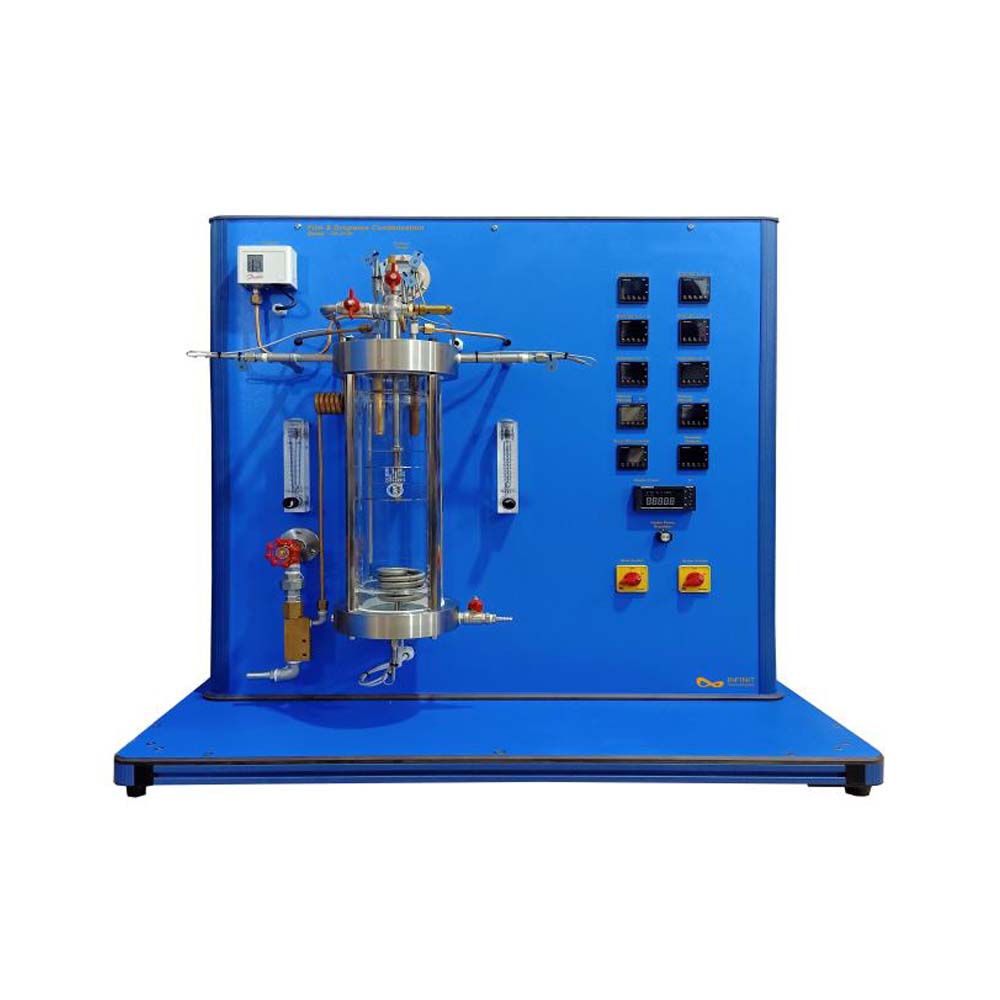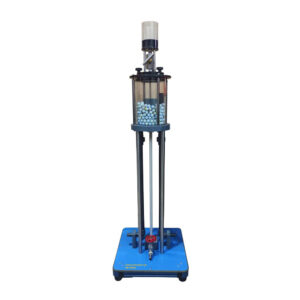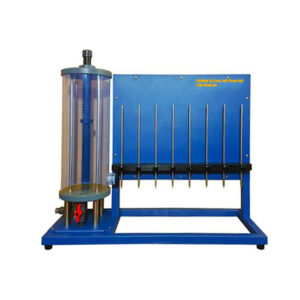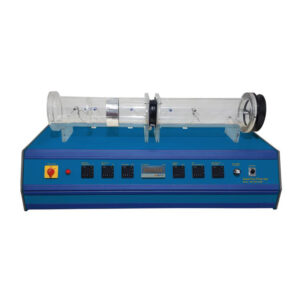Condensation is the change of physical state of matter from gas phase in to liquid phase, and is reverse of vaporization. The unit Film & Drop Wise Condensation is specially designed to understand Condensation topic for the students. It allows students to visualize both Drop & Film Wise condensation and proceed few experiments to understand the concepts of both. During condensation very high heat fluxes are possible and provided the heat can be quickly transferred from the condensing surface into the cooling medium, steam using heat exchangers can be compact and effective.
Filmwise Condensation
Most heat transfer surfaces on a heat exchanger are made of ‘wettable’ materials. During condensation, a film of condensate spreads over these surfaces. As more vapor condenses on the outside of the film, its thickness increases and the film will start flowing downwards due to its weight. Heat transfer occurs through this film of condensate to the surface material beneath, then to the cooling medium. The liquid film is generally a poor conductor of heat, contributing much to the thermal resistance and inefficiency of this mode of condensation.
Dropwise condensation
If the heat transfer surfaces are treated to become ‘nonwettable’, the condensate that forms on the surface will be shaped like spherical beads. These beads adheres together to become larger as condensation proceeds. The bigger beads will then start to flow downwards due to their weight, thus collecting all other static beads along the way. As the beads increase in size, the velocity increases, finally leaving a trail of bare surface free from liquid film. This bare surface offers very little resistance to the transfer of heat. Therefore, very high heat fluxes are possible. The advantages of dropwise over filmwise condensation are apparent, resulting in a smaller heat transfer area, smaller temperature difference or larger heat transfer rate for a fixed set of conditions.
Experiments
- Visual observation of filmwise and dropwise condensation, as well as nucleate boiling.
- Determination of heat flux and heat transfer coefficients in both filmwise and dropwise condensation at different operating pressures.
- Demonstration of Dalton’s Law.
- Investigation on the relationship between saturation pressure and temperature for water up to 100°C.
- Study on the effect of presence of air in the condensers.
Specification
- Visualisation of the condensation process of water in a transparent tank
- Two water-cooled tubes as condensers with different surfaces to realise film condensation and dropwise condensation
- Controlled heater to adjust the boiling temperature
- Water jet vacuum ejector to evacuate the tank
- Pressure switch and safety valve for safe operation
- Sensors for temperature with digital display
- Pressure gauge for measuring tank pressure
- Rotameters for both condensors




